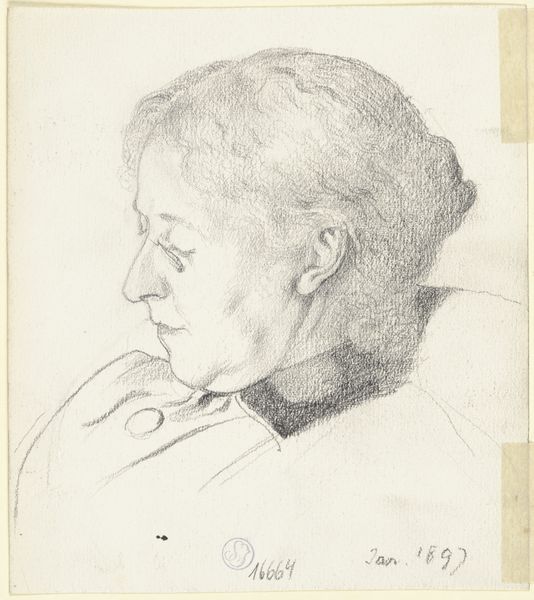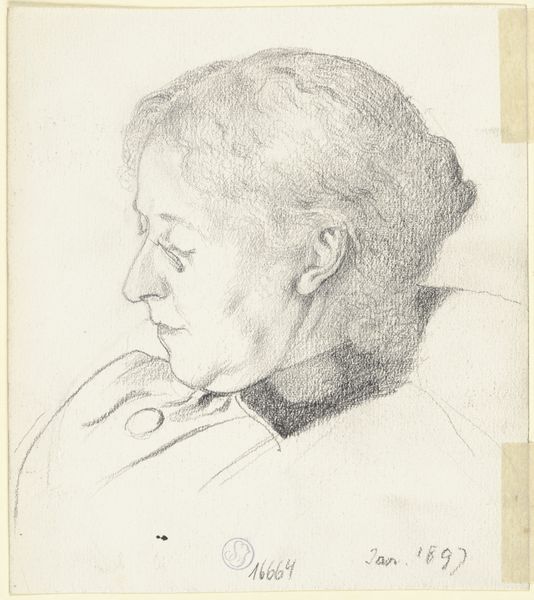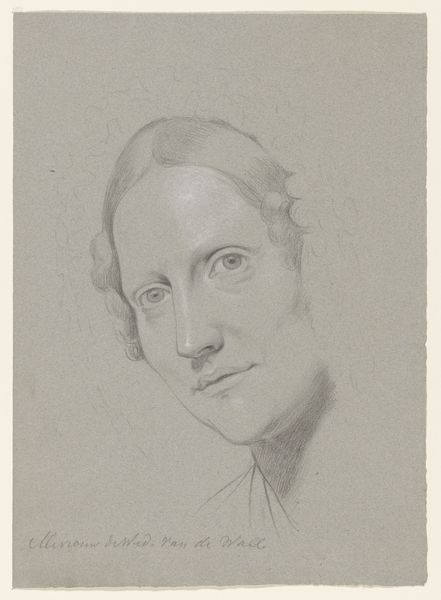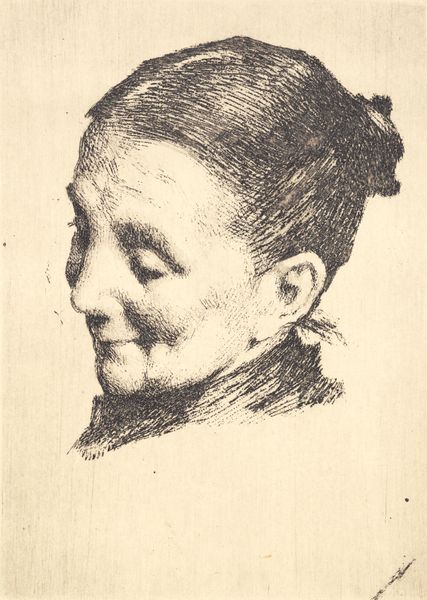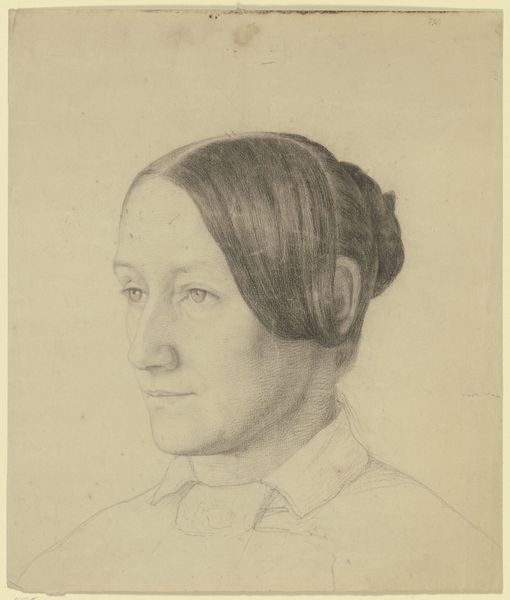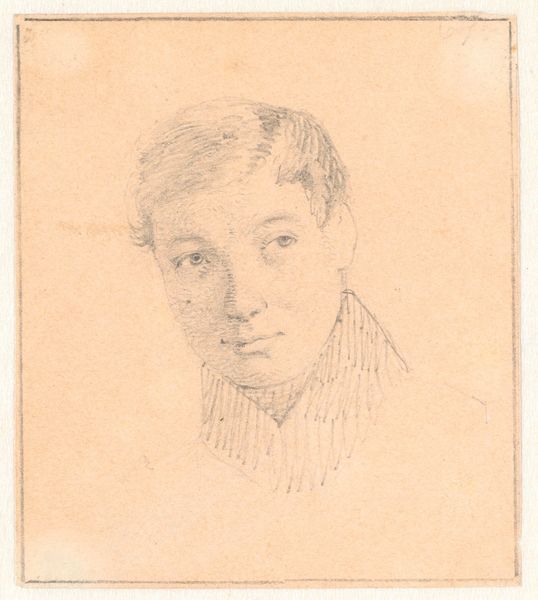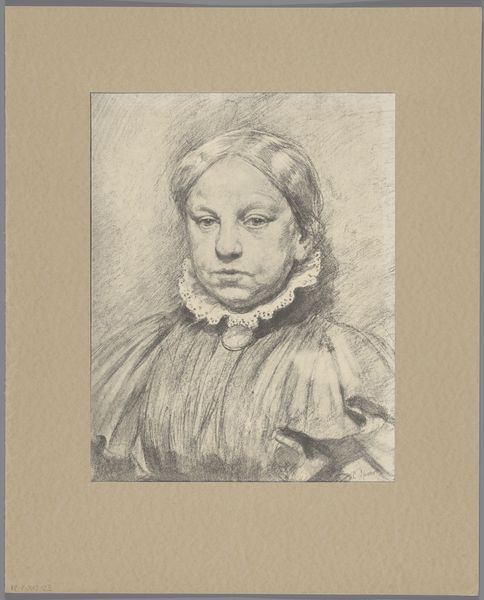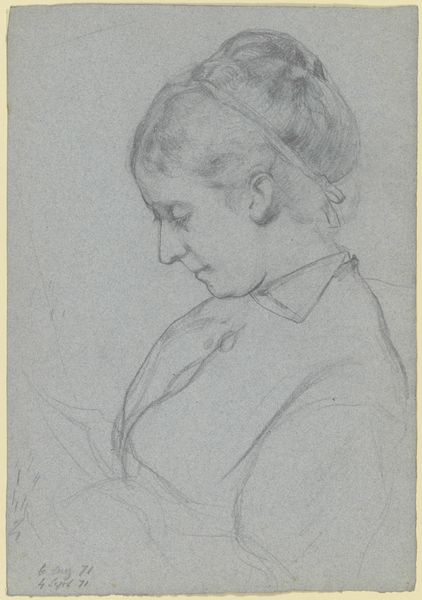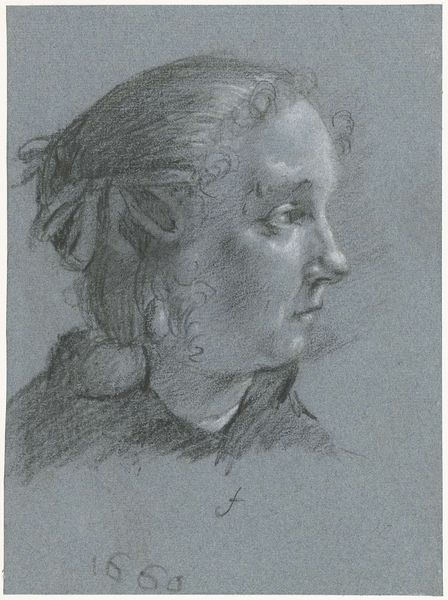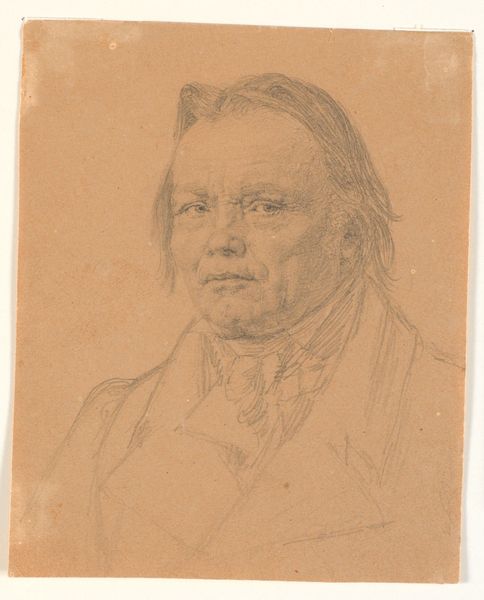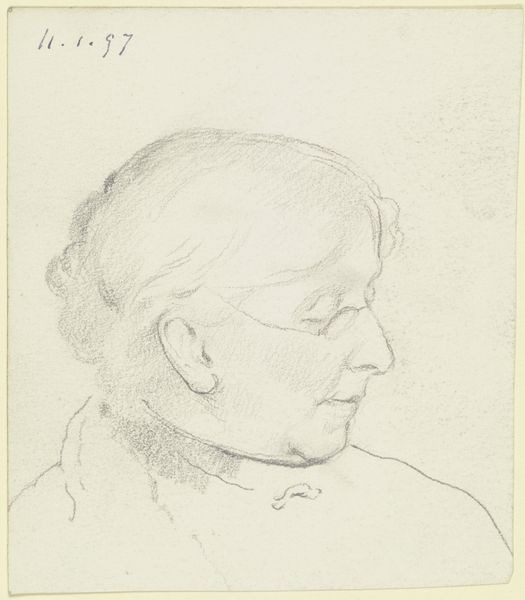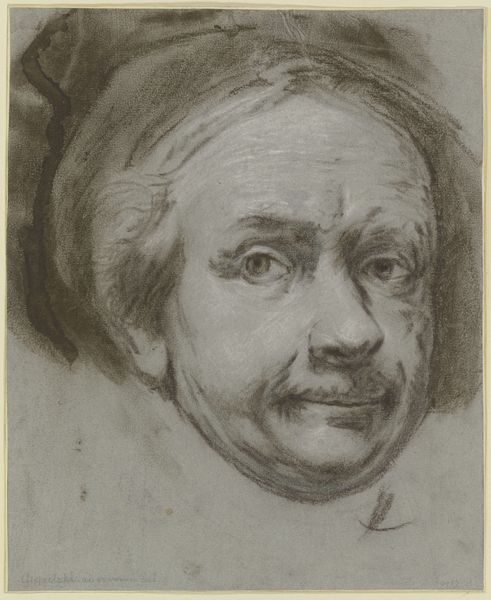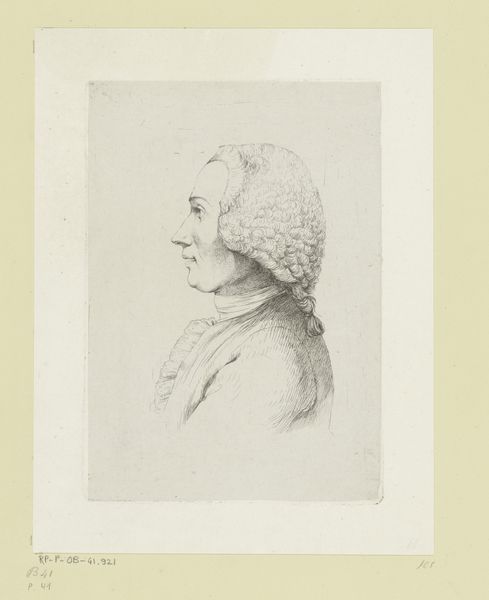
drawing, paper, pencil
#
portrait
#
pencil drawn
#
drawing
#
aged paper
#
toned paper
#
light pencil work
#
16_19th-century
#
pencil sketch
#
paper
#
personal sketchbook
#
portrait reference
#
german
#
pencil
#
portrait drawing
#
pencil work
#
tonal art
#
realism
Copyright: Public Domain
Curator: Here we have Alois Gabl's 1861 pencil drawing, "Bildnis einer alten Frau im Dreiviertelprofil," housed right here at the Städel Museum. Editor: It’s immediately striking, isn’t it? The delicate shading lends it an air of vulnerability, and her downward gaze suggests contemplation or perhaps weariness. Curator: Gabl's mastery of the pencil is evident in the way he captures the textures of her skin, the wrinkles around her eyes—there's a remarkable realism. It’s almost photographic, anticipating later developments. Editor: True, but to only see photographic anticipation ignores the historical reality. The subject, presumably working class, rendered in a way that invites empathy, even dignity, raises questions about representation in art at the time. How often were women like her portrayed with such quiet intensity? Curator: An important consideration. But I am also struck by Gabl's use of line. Observe how he uses delicate strokes to define her face, contrasted with the slightly looser rendering of her clothing. It's a masterful control of technique used for structure and visual balance. Editor: And what does it mean that this woman is not named, beyond ‘an old woman’? Is it a reflection of her societal position? Does the very act of an artist, likely of a higher social standing, choosing to depict her introduce an imbalance, a power dynamic worth examining? Curator: Those are fascinating, if unanswerable, points to consider. Nevertheless, Gabl’s careful handling of light and shadow is noteworthy; notice how light falls on her forehead and cheek, drawing the viewer’s attention. Editor: Yes, and the implied narrative. We see a portrait of age, labor perhaps, in mid-19th century Germany. Her bowed head carries the weight of lived experience, connecting the piece to wider social issues of gender and class disparity. Curator: Regardless of the social implications we infer, technically, this drawing demonstrates Gabl’s deep understanding of form and light. The cross-hatching, the blending – it all comes together to create a believable and affecting likeness. Editor: Perhaps. And approaching from a critical viewpoint that acknowledges this as more than just an objective rendering invites conversations about not just artistry but also the politics embedded in what is chosen to be portrayed, by whom, and how. Curator: An alternative, compelling conclusion to consider alongside a skilled pencil technique. Thank you. Editor: And thank you for the sharp observation of artistry and skill, placing it well within the artistic framework.
Comments
No comments
Be the first to comment and join the conversation on the ultimate creative platform.
